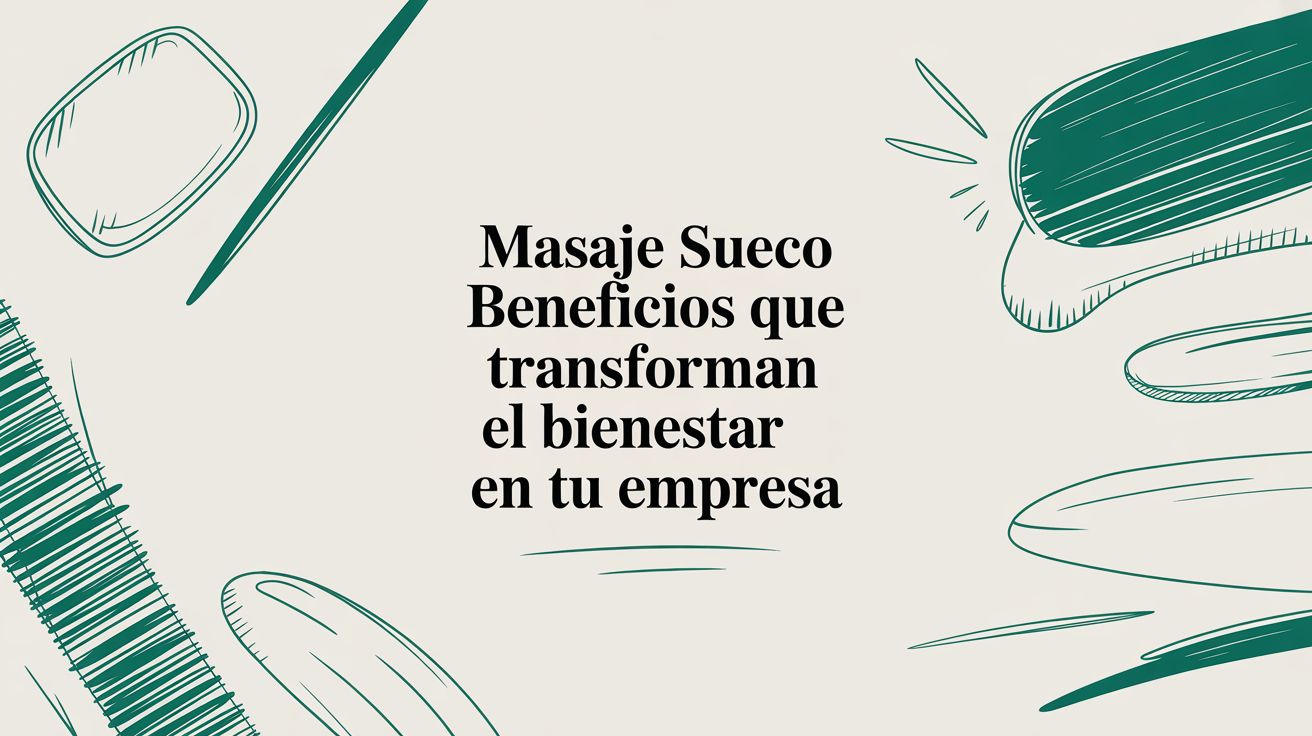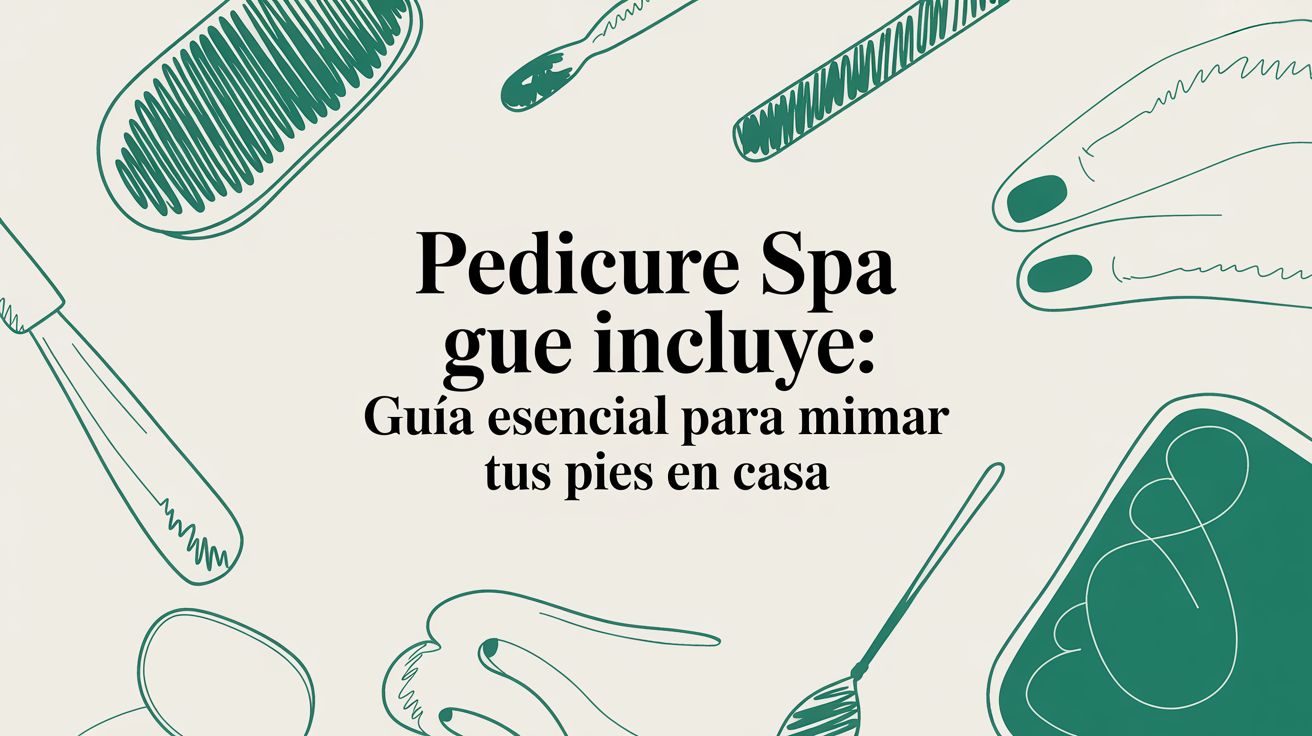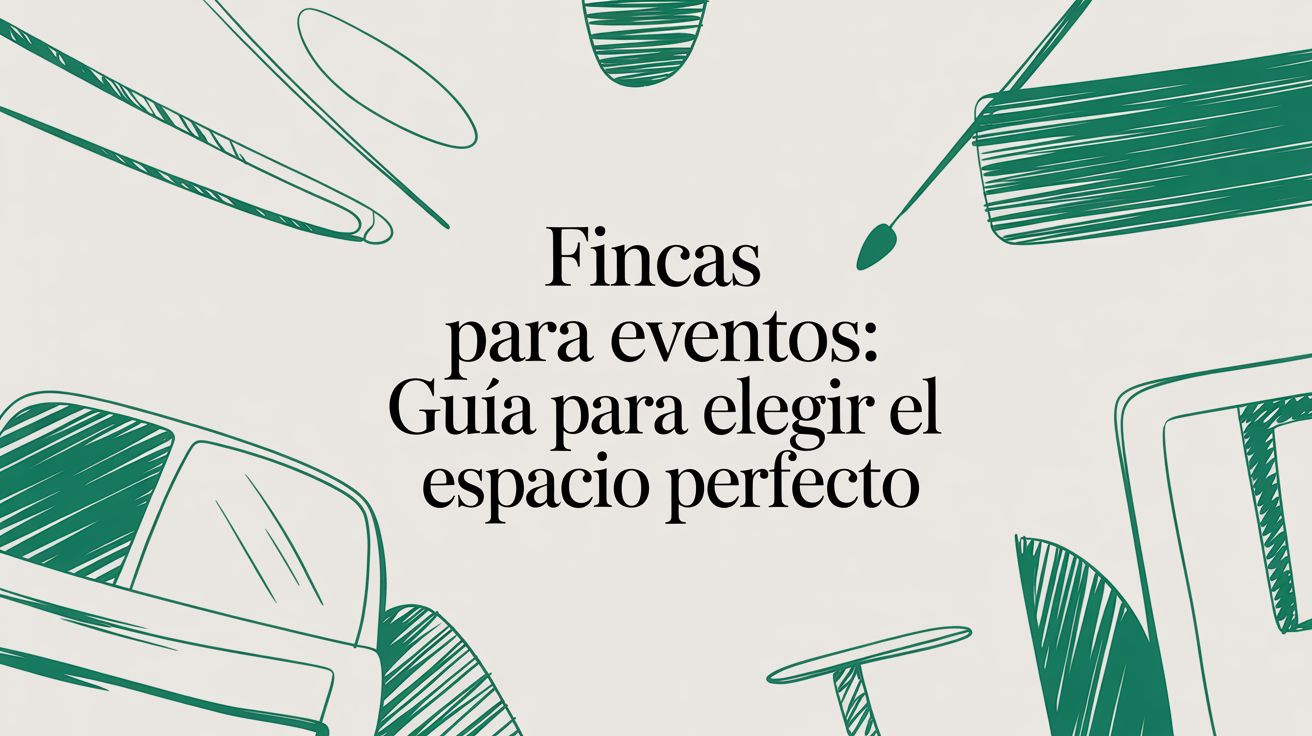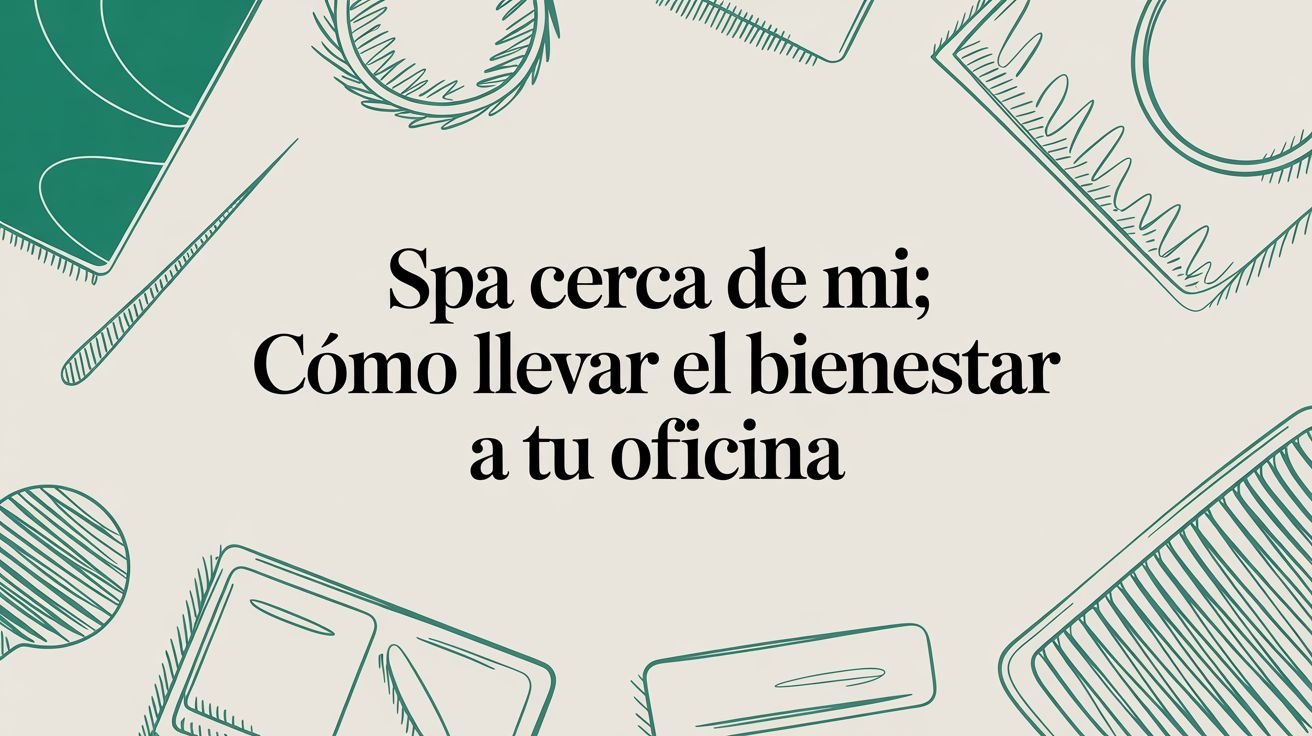Oct 28, 2025
How to give relaxing massages to relieve stress
Giving a good massage is much more than a kind gesture. It is a powerful tool to communicate care and transform a person's well-being. To learn how to give massages that truly connect and relieve, it’s essential to master three pillars: create an atmosphere of trust, choose the right elements, and, above all, maintain open communication about what each person needs.
The fundamentals of an unforgettable massage experience
At Zen to Go, we have been implementing wellness programs in offices throughout Mexico since 2019, and if there’s one thing we’ve learned, it’s that a well-executed massage can change the energy of an entire team. The difference between a pleasant break and an experience that truly repairs lies in the details. It’s not just about technique, but the care you put into the whole process.
Everything begins with preparing the space. Think of a busy office; even there, it’s possible to create an oasis of calm. Warm lighting and a pleasant temperature are the first steps. Then, the music: something soft, instrumental, that helps the mind disconnect from the tasks and stresses of the day.
An effective massage doesn’t start with the first physical contact. It begins the moment the environment invites the body and mind to release accumulated tension. It’s like preparing the ground for relaxation to blossom naturally.
The role of oils and assertive communication
The choice of oil is a key detail. It not only facilitates the hands to glide smoothly but also nourishes the skin. Sweet almond or jojoba oils are excellent options to start; they are light, absorb well, and don’t leave a greasy feeling. Additionally, they are very well tolerated by most skin types.
However, the most important tool you have at your disposal is your voice. Communication is everything. Before you begin, ask where the person feels the most tension and what level of pressure they prefer. During the massage, keep that dialogue open. A simple "Is the pressure okay?" builds trust and ensures that the experience matches their real needs.
When you master these three pillars—the environment, the oil, and communication—you are offering much more than muscle relief. You’re creating a safe space that calms the mind. This is how the benefits of a relaxing massage are maximized.
How to prepare the environment for total relaxation
The secret of a professional quality massage doesn’t lie solely in the technique. Much of the magic happens before the first caress, in those details that prepare the body and mind to release accumulated stress. Transforming a room, or even an improvised space in the office, into a sanctuary of calm is simpler than it seems and makes a tangible difference in the experience.
It all starts with the surface where the massage will take place. A professional massage table isn’t essential; a firm bed or a thick mat on the floor works perfectly. The most important thing is that the person is comfortable and that you can move around them without straining your own back.
This attention to detail is what distinguishes high-quality wellness services. In fact, according to a recent analysis, the spa industry in Mexico, where massage is a pillar, reached a value of 122.39 million dollars in 2023 and is expected to continue growing. This shows that more and more people and companies are investing in spaces for personal care. If you're interested, you can read this market analysis of spas.
Postural comfort is the number one priority
Once you have the surface, the next step is to use pillows strategically. This small gesture changes everything. Placing a pillow under the knees (if the person is face-up) or under the ankles (if they are face-down) is crucial.
This simple adjustment works wonders:
Aligns the spine: Immediately reduces tension in the lower back.
Relieves pressure on joints: Allows hips and shoulders to completely relax.
Promotes muscle relaxation: A body that feels well-supported is a body that allows itself to release.
The goal is for the person not to have to make the slightest effort to be comfortable. When the body feels completely supported, the mind follows almost instantly.
The little details that make the big difference
Finally, think of the senses. A few drops of lavender essential oil in a diffuser can enhance relaxation through aromatherapy. Soft music and dim lighting complete that peaceful atmosphere.
The finishing touch is to prepare the person. Ask them to lie down, normally face down to start, and guide them to take three deep, slow breaths. This small ritual marks the formal beginning of the session and helps their nervous system start to calm down. If you want to explore more about this, we have a guide on our blog about how to prepare for a massage and make the most of the experience.
Essential massage techniques for beginners
Once the environment is ready, it's time for the hands to take center stage. Learning how to give massages is like studying a new language: each movement tells the muscles something different. You don't need to be a certified therapist to start; just understand three key movements that form the basis of almost any relaxing massage.
The secret isn’t in applying isolated techniques, but in creating a fluid experience. Imagine it as a good conversation: you start with a gentle greeting, delve into the important points, and conclude with calmness.
The first contact: Effleurage
Every quality massage begins with effleurage. The word is French and means "to glide". These are long, fluid movements we use to spread the oil and, more importantly, to warm up the muscles. It’s the "hello" that your hands give to the other person’s body.
Use the entire palm of your hands, keeping your fingers together but relaxed. A good starting point is the lower back: glide your hands upwards, to the sides of the spine, until you reach the shoulders. When you get there, open your hands and return along the sides of the torso.
Pressure: Light to medium. The goal is to prepare the ground.
Rhythm: Slow and steady. This sends a calming signal to the nervous system.
Function: Activate circulation and get the body accustomed to your touch.
This movement is your anchor. You will use it at the beginning, end, and between deeper techniques to keep everything feeling connected.
Kneading: Petrissage to release tension
When the muscles are receptive, it’s time to switch to petrissage or kneading. This technique goes deeper and focuses on releasing that accumulated tension known as "knots".
Visualize how you would knead dough to make bread. With this technique, you lift, compress, and roll the muscle gently. You can use the palm of your hand or your fingers. It works wonders in areas like the shoulders, upper back, or calves.
The key to petrissage isn’t brute force, but rhythm. A steady kneading convinces the muscle to relax, rather than forcing it. It’s a dialogue, not an imposition.
Alternate your hands in a continuous motion, lifting the muscle with one while the other is already preparing to take over. This not only relaxes but also helps improve the tissue’s flexibility.
Friction: Precision for specific points
Finally, we arrive at friction, your precision tool. It’s used to work on very specific tension knots. Unlike the long strokes of effleurage, friction concentrates on a small area.
Use the pads of your thumbs or fingers to apply firm and consistent pressure, making small circular movements directly over the knot. This motion generates localized heat and increases blood flow just in that area, helping to dissolve the contraction.
Here communication is vital. The pressure should be intense but tolerable, a kind of "discomfort that relieves", never a sharp pain. Always ask how they feel.
Practical guide to massage techniques and their application
Check this table to know which technique to use based on the goal and area of the body, ideal to have on hand during practice.
Massage Technique | Description of movement | Main objective | Ideal application areas |
|---|---|---|---|
Effleurage | Long, fluid glides with the palm of the hand. | Warm up muscles, spread oil, start and end the massage. | Full back, legs, arms. |
Petrissage | Rhythmic kneading: lift, compress, and roll the muscle. | Release deep tension and "knots", improve circulation. | Shoulders, trapezius, glutes, calves. |
Friction | Direct and circular pressure with thumbs or fingertips. | Treat trigger points (contractures) and specific adhesions. | Specific tension points in the neck, shoulders, and back. |
These three techniques, combined with intuition and good communication, give you the tools to offer a truly effective massage. If you're interested in learning how these and other maneuvers are used in professional contexts, we recommend exploring the different types of massage that exist.
Massage sequence for the back and shoulders: step by step
The back and shoulders are the epicenter where stress accumulates from long workdays. Now that you know the basic techniques, let’s integrate them into a fluid and coherent sequence. The goal is for you to learn how to give massages that flow like a continuous dance, not as a series of isolated movements.
A well-structured sequence guides the body toward a much deeper relaxation. It’s not just about applying pressure, but about telling a story with your hands: starting gently, exploring areas of tension, and finishing with a feeling of total relief.
This routine is designed to last about 30 minutes, a perfect time to offer significant relief.
The beginning of the sequence: warming up
The first step, always, is to prepare the area. Pour a little oil into your hands and rub them together to warm it before making contact with the skin.
Initial Effleurage: Start with long, wide glides (effleurage) from the base of the back to the shoulders. Use the palms of your hands, moving them to both sides of the spine (never directly over it). Repeat this movement 5 to 7 times, gradually increasing the pressure.
Gentle kneading: Once the back feels receptive, introduce the petrissage. Work on the large muscles to the sides of the spine with rhythmic kneading. Move up from the waist to the shoulders and then down along the sides.
This initial combination prepares the muscle tissue for deeper work, making the body feel secure from the beginning.
The deep work on key points
With the muscles warmed up, it’s time to focus on those areas where tension is most stubborn: the shoulder blades and the base of the neck.
Friction on the shoulder blades: Use your thumbs to make small circular movements around the edges of the shoulder blades. It’s very common to find knots here; apply firm pressure but always be sensitive to the person’s reaction.
Kneading on the trapezius: The trapezius muscles, which run from the neck to the shoulders, are among the most affected by postural stress. Here, the petrissage technique works wonders. "Pinch" and gently roll the muscle between your fingers and palm.
Pressure at the base of the neck: Carefully use your thumbs to apply sustained pressure on the points on both sides of the spine, right where the neck ends and the skull begins.
If you come across a particularly tense knot, you might need a more specific technique. In those cases, you may be interested in exploring deep tissue massage and its applications.
The most important thing is to maintain a smooth transition between each movement. Always use effleurage as a connector to move from one area to another, avoiding any abrupt changes that may interrupt relaxation.
The growing demand for wellness has professionalized this practice. In Mexico, about 29,100 people work as massage therapists, of which 87.3% are women. This shows the importance of this work in health care. You can learn more about the massage therapist profession in Mexico and its economic impact in this detailed analysis.
The most common mistakes when giving a massage (and how to avoid them)
Knowing how to give a good massage goes beyond learning the correct techniques; it’s also about understanding what things should never be done. In our experience bringing wellness to companies with Zen to Go, we’ve seen that trust is built on safety. A poorly executed movement can cause discomfort and nullify all the relaxation work.
The gravest and most common mistake is applying direct pressure on the bones. Never, under any circumstances, apply pressure directly on the spine or on joints like the knees. These areas have no muscle that cushions the force, and you could cause an injury.
Equally important is recognizing contraindications. Massaging over areas with acute inflammation, open wounds, recent bruises, or pronounced varicose veins is contraindicated if you are not a health professional, as it may worsen the problem.
Take care of your posture and learn to listen with your hands
A common oversight is the posture of the person giving the massage. If you hunch over or use only the strength of your arms, you’ll tire very quickly. The key is to use your body weight. Keep your back straight and your knees slightly bent so that the force originates from your center.
Another fundamental point is to learn to "listen" with your hands. Pay attention to the signals from the body. If you notice a muscle suddenly tensing under your fingers, that’s a clear sign: the pressure is too much.
Don’t ignore non-verbal signals: A held breath or a small flinch are clear alerts to reduce intensity.
Constantly adapt your technique: A good massage is not monotonous. It adjusts in real-time to the feedback you receive.
Communication is your best ally: When in doubt, ask. A simple "Is everything okay here?" makes a huge difference.
The context matters more than you think
Ignoring the general condition of the person is another classic mistake. Always ask if they have had recent injuries or if they have any medical conditions before starting. If you want to dig deeper, you can consult our guide on what medical contraindications cannot be treated with a massage.
Forgetting about contraindications is like sailing without a map: you risk going to dangerous places. The safety and well-being of the other person is always the highest priority.
The interest in wellness has led many people to seek solutions at home. This trend shows that people increasingly value tools for managing stress on their own, which makes knowing these basic precautions even more important.
Resolving the most common doubts about giving massages
To close, let’s address those questions that almost everyone has at the beginning. Think of these answers as a chat with a colleague with more experience; they are practical tips to help you gain confidence. Learning to give massages is a journey, and resolving these doubts is crucial to get off on the right foot.
How much pressure should I use?
The golden rule is to always start gentle and gradually increase pressure. Communication is your best tool, so ask directly: "Is this pressure okay for you?" Good pressure feels deep, as if you're reaching the muscle, but should never cause sharp pain.
Pay attention to non-verbal signals. If the person holds their breath or tenses their muscles, that’s your sign to reduce intensity. Knowing how to "listen" with your hands is as important as asking.
What oil do you recommend to start?
To keep it simple, sweet almond, jojoba, or grape seed oils are fantastic. They have a light texture, the skin absorbs them well without leaving a sticky feeling, and they are ideal for almost everyone.
One extra trick: if you want to enhance the relaxing effect, add one or two drops of lavender essential oil for each tablespoon of the base oil you use. Aromatherapy can take the experience to another level.
The quality of the oil significantly influences the experience. A good oil not only facilitates the massage but also nourishes the skin. It’s one of those little details that make a difference.
Are there any areas of the body I should avoid?
Absolutely. Safety comes first. There are certain "forbidden zones" where you should never apply direct pressure. Stay away from these areas:
The spine: Always work to the sides, on the paravertebral muscles, never directly on the bone.
Joints: Avoid pressing on knees, elbows, or ankles.
The front of the neck: This is an extremely sensitive area.
Areas with injuries: Do not massage over open wounds, inflammation, very visible bruises, or pronounced varicose veins.
How much time is enough for a good massage?
Quality always outweighs quantity. A 20 or 30 minute massage, well-focused on the back and shoulders, can be much more effective than a one-hour session done without focus.
As a beginner, it's better to focus on one or two areas and work them well, rather than trying to cover the whole body superficially.
At Zen to Go, we understand that integrating wellness into your team’s routine is key to generating real and lasting change. Our services, such as shiatsu chair massage or desk massage, are designed to adapt to the dynamics of any office, offering a flexible and high-impact solution to reduce stress. Discover how we can design a personalized wellness plan for your company at https://www.zentogo.com.mx.





